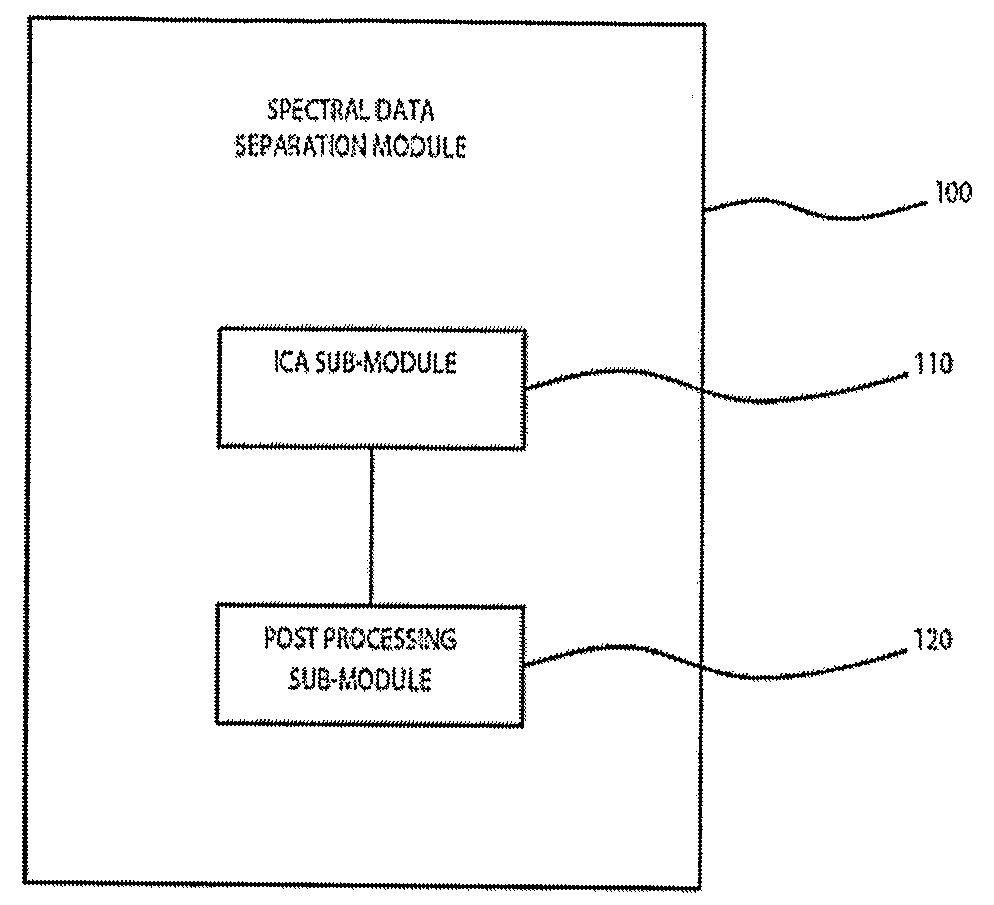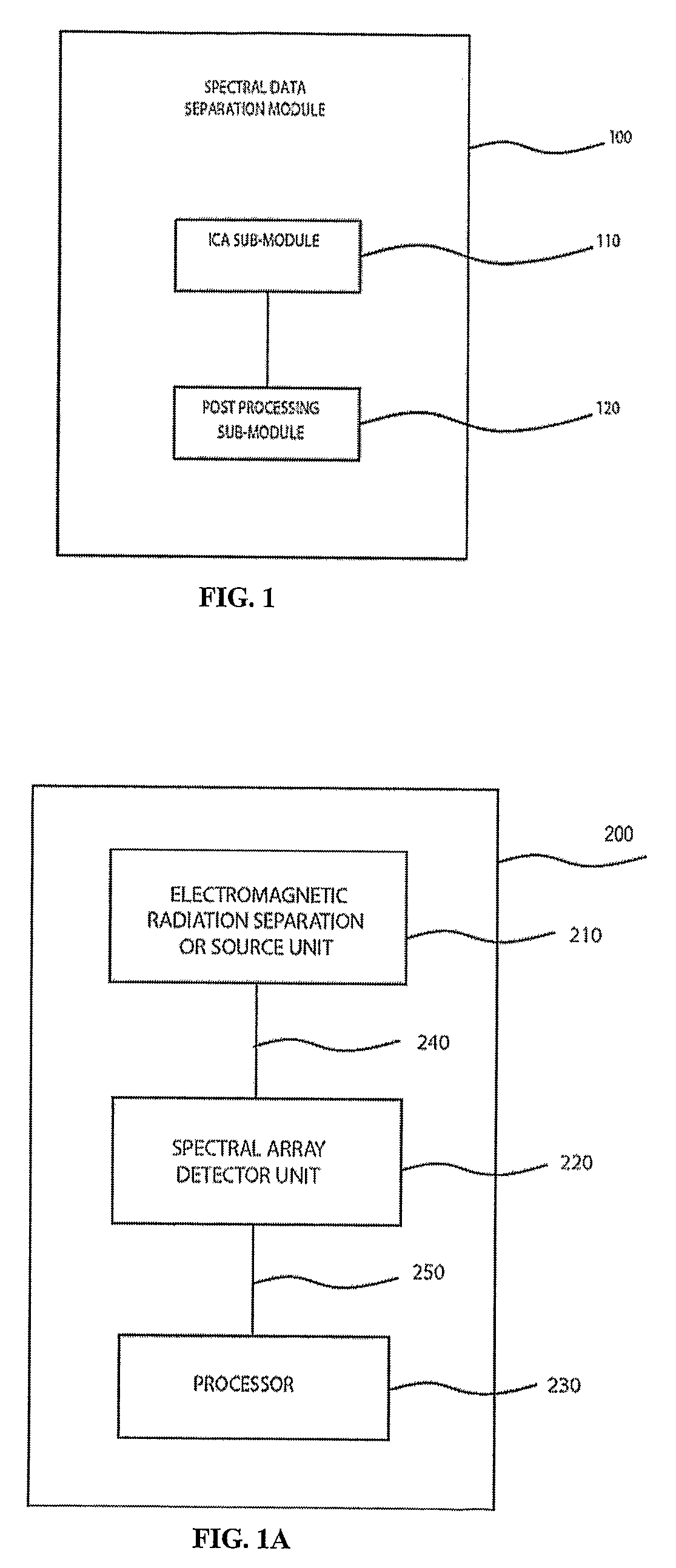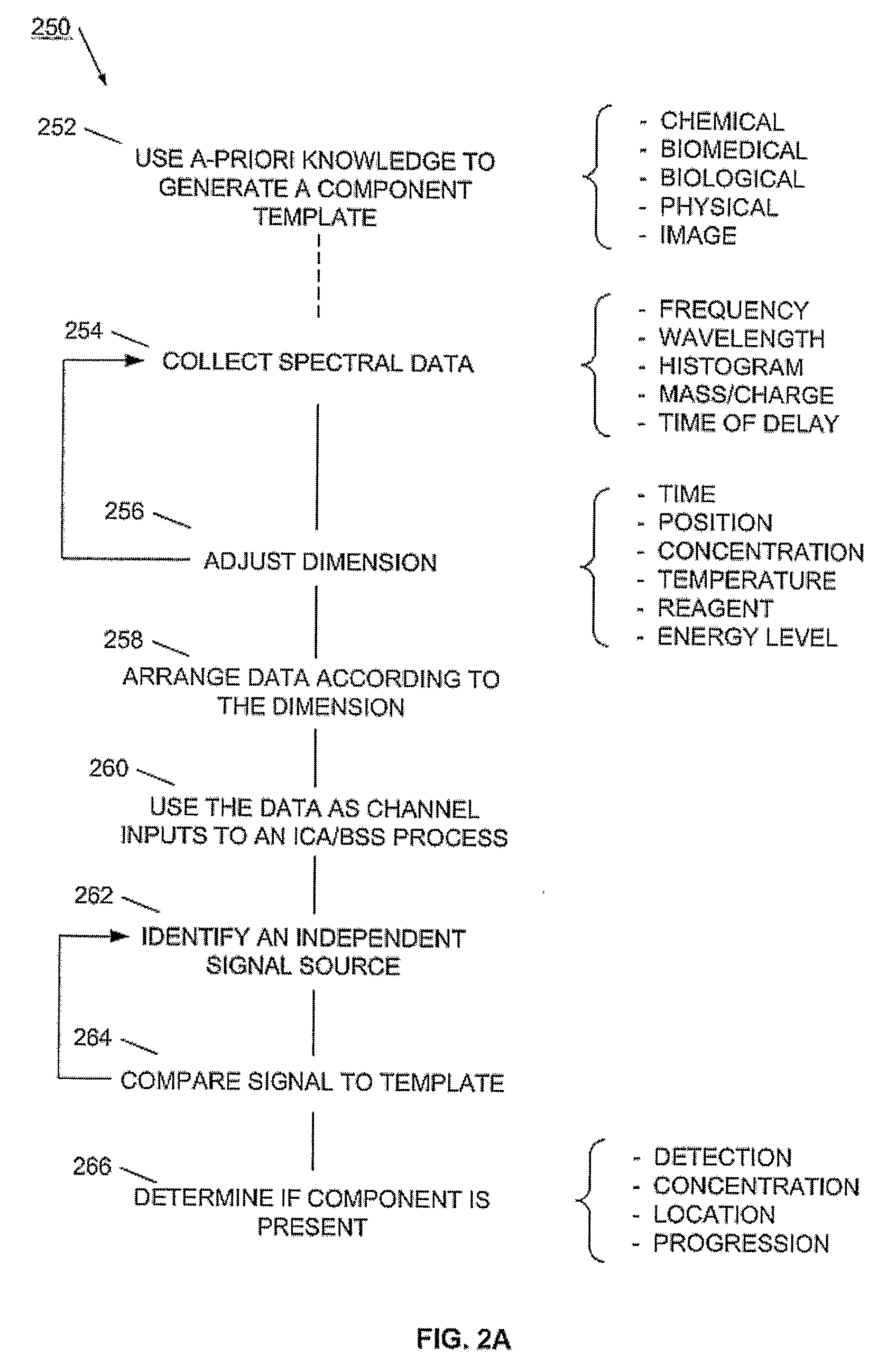System and Method for Spectral Analysis
a spectral analysis and system technology, applied in the field of blind source separation and multi-dimensional spectroscopic data classification, can solve the problems of “overlapping” pure component spectra, poor convergence properties, and currently only poorly utilized, and achieve the effect of increasing chemical shift dispersion and greater detection sensitivity
- Summary
- Abstract
- Description
- Claims
- Application Information
AI Technical Summary
Benefits of technology
Problems solved by technology
Method used
Image
Examples
Embodiment Construction
General Description
[0033]FIG. 1 illustrates one embodiment of the present invention as spectral analysis module 100. The spectral analysis module includes an ICA processing sub-module 110 and optionally a post-processing sub-module 120. This spectral analysis module 100 can be used alone (e.g., a toolbox) or in a system, as described further herein.
[0034]As used herein, a “module” or “sub-module” can refer to any apparatus, device, unit or computer-readable data storage medium that includes computer instructions in software, hardware or firmware form, or a combination thereof and utilized in systems, subsystems, components or sub-components thereof. It is to be understood that multiple modules or systems can be combined into one module or system and one module or system can be separated into multiple modules or systems to perform the same function(s). Preferably, the invention can be implemented in a variety of computing systems, environments, and / or configurations, including person...
PUM
 Login to View More
Login to View More Abstract
Description
Claims
Application Information
 Login to View More
Login to View More - R&D
- Intellectual Property
- Life Sciences
- Materials
- Tech Scout
- Unparalleled Data Quality
- Higher Quality Content
- 60% Fewer Hallucinations
Browse by: Latest US Patents, China's latest patents, Technical Efficacy Thesaurus, Application Domain, Technology Topic, Popular Technical Reports.
© 2025 PatSnap. All rights reserved.Legal|Privacy policy|Modern Slavery Act Transparency Statement|Sitemap|About US| Contact US: help@patsnap.com



